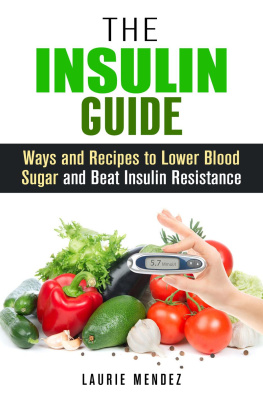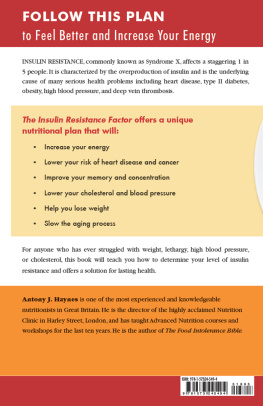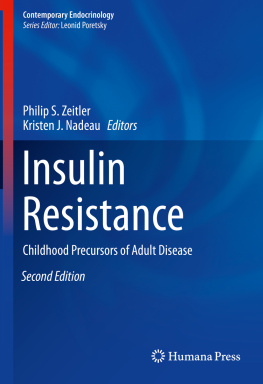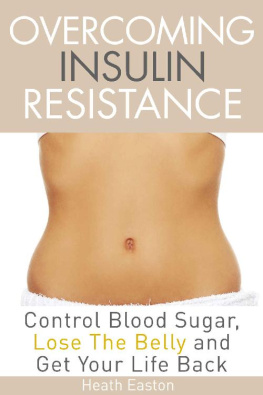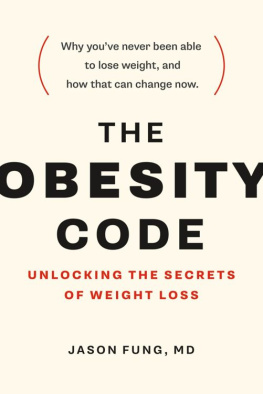The Insulin Guide
Ways and Recipes to Lower Blood Sugar and Beat Insulin Resistance
Copyright Notice
Reproduction, duplication, transmission of this document in part or in whole is permitted only with written permission from the publisher. All rights reserved.
Respective brands and trademarks mentioned in this book belong to their respective owners.
Disclaimer
This document is geared towards providing summarization of information related to the topic. While all attempts have been made to verify the accuracy of the information, the author does not assume any responsibility for errors, omissions, or interpretations of the content. The information is offered for informational or entertainment purposes only. If professional advice is necessary, a qualified legal, medical, financial or another respective professional should be consulted. The reader is responsible for his or her own actions. The publisher does not accept any responsibility or liability arising from damages or losses, real or perceived, direct or indirect, resulting from the use of this information.
Table of Contents
Introduction
I have always been amazed by the wonders of the human mind and its complicated ways. Isn't it interesting how it always finds a way to avoid the things we don't like and then, when the situation gets serious, and those things can't be ignored any longer, our mind welcomes them with a great pleasure? Take for example the case of a restrictive diet. Although we can easily see that our overweight body needs us to take certain measures (eliminate certain foods from our menu, eat regularly and in an organized manner, include more healthy fruits and vegetables, find a way to be more physically active), our mind is always able to find excuses about why it's absolutely impossible for us to do all those things.
We can't find the time to exercise or respect an eating program. Likewise, we wouldn't have as much energy if we gave up our unhealthy but more consistent (and tasty) meals, our body could not function without our favorite cake every day, and so on. I think you get my point. However, as through a kind of sorcery, our perspective suddenly changes once we start to face the real consequences of our irresponsible behavior. When the negative things that everyone talked about (and seemed so far away from us at that moment) become our everyday company, we open our eyes for the first time in what seems like an eternity.
When we really acknowledge that our way of acting might put or has already put our health in danger, the things that we talked about above do not look so impossible anymore. In fact, we realize now that we could have done them from the very beginning, and the situation would have been completely different. This is the way in which the human mind works: in order to avoid the ugly view of something we don't like, it always finds a way to look in another direction. But when the context limits our perspective to that single view, it suddenly becomes brighter and easier.
Unfortunately, for some of us, this moment is when we return from our physician after he/she has placed a diagnostic on us: a difficult disease that we must live with for the rest of our life. Others are lucky enough to experience this change in time to reverse the effects of their lifestyle choices. One of the best examples of such situations and the one which will be the focus of our book is Insulin Resistance. It is estimated that more than 80 million persons in the USA alone have this syndrome, and the sad part is that most of them are not even aware. Because, when it is not controlled and eventually reversed, Insulin Resistance can turn into Pre-Diabetes and later into Type II Diabetes.
For this reason, this book is intended as a tool to raise everyone's awareness regarding the importance of a healthy and balanced lifestyle for every person not only for those suffering from IR or with a genetic predisposition to it. For an easier comprehension, the content will be divided into three separate sections. The first will present the basics of this syndrome and what is true and false about it. The second part will help you build your own diet plan and will provide you with useful tips to overcome hunger and food cravings. In the end, the third chapter will give you 12 different recipes which not only that are highly recommended for anyone with IR, but will also be enjoyed by all the members of your family.
Staying healthy doesn't have to be boring or troublesome. Use your knowledge and creativity to make the best of any situation.
Chapter One - Understanding the Concept of Insulin Resistance
I n this chapter, you will learn:
- About the basics of IR
- How this syndrome develops and manifests
- What is the connection between IR and diabetes
- What is myth and what is real about IR
As previously mentioned, the first part of the book will focus on the theoretical information that absolutely everyone should have about this topic. If your doctor already confirmed that you have IR, you probably already know everything about it. In this case, you can skip this section and go directly to the part where you can find out about the essentials of a diet plan. However, there is no such thing as too much information so you might want to check your knowledge by reading about it again.
Whether you have cases of this syndrome in your family and fear that you might also inherit it, or you simply want to do your best to prevent it, staying documented and following the indications of a healthy lifestyle is always a good way to prevent many similar diseases. This is why this chapter will give you a brief presentation of what we all need to know about the IR syndrome.
What is Insulin Resistance?
T o start with the very beginning, we need to learn a few things about insulin and its importance for the good functioning of our organism. In normal circumstances, our pancreas produces enough quantities of a hormone called insulin. From the pancreas, insulin travels in our whole body through the blood system. Here, insulin has an essential role: to help our metabolism turn the foods we eat into energy. How does it do that? Well, we all know that once they reach our digestive system, the constituent parts of many foods turn into glucose, which, eventually, enters the bloodstream.
If insulin doesn't play its part to help the body (liver, muscles, fat) absorb the glucose, it accumulates in our blood. This is when a person gets diagnosed with a high blood sugar or glucose level. This is what Insulin Resistance refers to, the inability of the body to benefit from the function of insulin. Because it can't absorb the glucose from the bloodstream properly, the body reacts by producing larger and larger quantities of insulin. In time, if the individual is not aware that he/ she is insulin resistant and does not decrease the quantity of glucose ingested, the pancreas will fail to produce enough insulin to help the liver, muscle, and fat absorb and turn it into energy. Hence, that person will most likely develop diabetes or other similar disorders.
The good news is that, if a person is diagnosed with IR at an early stage, they have a very good chance to control it and, in some cases, even to cure it. But, in order to be able to do that, we need to know how to recognize its earliest symptoms. Or, even better, we need to eliminate from our lives all those factors that have been proven to cause insulin resistance in some people.
Signs and Symptoms of Insulin Resistance
U nfortunately, insulin resistance does not manifest as a normal disease where you can clearly feel and distinguish a symptom and immediately associate it with a certain disorder. In most cases, people are not even aware of it until they have already developed pre-diabetes or, in the luckiest situations, they are required to get a blood test. Because, as we have seen in the previous section, insulin resistance refers to a high level of sugar (glucose) in our bloodstream, a complete blood test can reveal if we have this syndrome or not.
Next page
